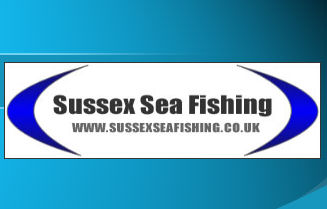


|
|
||||||||||||||||
|
|
|
|
 |
|
|||||||||||||||
|
This page will give you detailed information on different types of tackle. Plus it will also host key words or phrases that you may have heard but not understood what it meant. Most tackle items can be purchased in the Tackle Shop
Visit the new SussexSeaFishing tackle shop as we have a new range of Tronix tackle and for the first month only, most items will be introduced at a special half price discount (39p or 49p per pack of hooks, beads, swivels and much more) so get yours quick by clicking here.
Boom - These hold the bait away from the mainline so that it doesnt tangle. In a strong tide these can be great for using bunches of ragworm dropped over the side of a pier wall for Pollack. They are used on a variety of rigs and come in a huge range of designs, materials and sizes. Some anglers use metal Booms when fishing for bottom feeding fish like flounders as they hols the bait close to the bottom. adding a small lead shot to your snood can also be good for this. They are also widely used for boat fishing.
Crimp - These are generally used to hold the swivel and beads in place on your rig body, they are a small piece of tube metal that you slide onto line and then gently squeeze in place with some pliers.
Lead Lifts - This is a great product if you fish over rough ground as it lifts your lead to the surface when you reel in, rather then it dragging along the bottom and catching on snags. When over rough ground this can be the difference between catching and losing a fish. If your fishing rough/snaggy ground then you may also want to check out the rotten bottom rig.
Mainline - This is the line that is on your reel.
Rig Body - This is the mainline that is the core of the rig, which everything is built on. Generally this is a thick diameter (60lb and upwards) and you can use shockleader for this. It has to be strong to take the strain of casting as thinner diameters would often snap! you can use thinner diameters when using lighter tackle though.
Swivels (From right to left) American Snap Swivel- These are often used to clip a weight to the line or connect a rig to the mainline. Personally I would rather use a gemini genie clip or link ring when attatching to a weight as these are more secure and designed for casting which makes them safer when power casting. They are fine for light work though.They are also used on slider float rigs where part of the rig is clipped to the mainline after casting. Barrel & Crane Swivels - The two middle swivels are commonly used on rigs to connect snoods to the main rig body while allowing it to move and flow in the tide or when a fish is hooked. They are one of the most commonly used bits of kit in rig making. The different sizes relate to the strength and also the type of line you are using with the swivel. Three way Swivel-These have a variety of uses Cascade Swivel - These are used on clippedup rigs to keep the snood and bait streamline to the rig body and are used when trying to cast long distance, these are probably one of the best ways to clip down a rig and keep it streamline as they release 99.9% of the time.
Weights - lead weights come in a huge range of sizes, shapes and designs each with a different purpose designed specifically for fishing a certain location or targeting a certain species. For example Grip leads are designed to grip the bottom and hold your bait in one position in strong tides or rough conditions, however, you can also get long grip leads with wires double the normal size for holding bottom at strong tidal venues. you can also get impact leads which have a breakaway impact type shield built in to clip your bait to. roller or plain leads with move slightly with the tide, the benefit of using a lighter roller type weight is that your bait will cover a large area and hopefully find where the fish are. There are also many other designs around so feel free to ask any questions you have about them.
Copyright © 2006 SussexSeaFishing |
|||||||||||||||||
|
|
|||||||||||||||||
Copyright © 2006 SussexSeaFishing
craigide@hotmail.co.uk
#sussexseafishin
| Site Map |